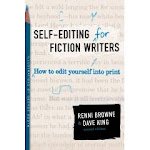By Sandy Tritt
Many successful writers advise that it is important to have a special place set aside in which to write. A room, a desk, a closet—somewhere that is reserved only for the act of writing. I think this is wonderful. If you can do this, and if this helps you get into the “writing mood,” do it.
 Many writers also suggest setting aside a special time to write. To sit in your special place for 30 minutes or 4 hours or however long you’ve set aside, and discipline yourself to write. Again, I think this is great. Some writers are very disciplined and get up at 4 a.m. to have 3 hours to write before starting their workday. This impresses the heck out of me, but I know the snooze button on my alarm would be worn out if I tried it.
Many writers also suggest setting aside a special time to write. To sit in your special place for 30 minutes or 4 hours or however long you’ve set aside, and discipline yourself to write. Again, I think this is great. Some writers are very disciplined and get up at 4 a.m. to have 3 hours to write before starting their workday. This impresses the heck out of me, but I know the snooze button on my alarm would be worn out if I tried it. In fact, none of this has ever worked for me. I write any where, any time. I keep a pad of paper by my bedside, so when I awaken at 3 a.m. with the solution to my writing dilemma, I am ready to write. I keep paper in my car, so when I’m waiting to pick up my kids or stuck in traffic, I can write. I keep paper in my oversized handbag, so while I’m at the doctor’s office or the PTA meeting, I can write. And I keep a laptop computer in my living room, in the same room as the television set and the energetic teenagers and the dog and the husband and the birds, and while I’m enjoying family time, I write.
For me, finding the time to write or the place to write has never been the problem. For me, forcing myself to finish my chores before I write, making myself accept my other responsibilities before I write, is the problem.
Writer’s Block? Uh-uh. I believe that writer’s block is what happens when we don’t know what comes next in our story. So start another story. I always have several projects open at a time—two or three novels, two or three short stories, and usually a few nonfiction or workshop projects. Anytime my brain gets tired or stuck on one story, I’ve got another to go to. Of course, the danger in this is that it is easy never to actually finish any one project, but that, again, is where discipline comes in. I try to assign “priorities” to my work. I usually have one fiction and one non-fiction project that is my current priority, and I don’t switch to one of the other projects unless I am truly stuck and need a break.
It is also easy to be overtaken by distractions. During the day, when I am home alone, I never turn on the television set. And those wonderful computer games that are so compelling? I have to admit, I love them. I compete against myself constantly in trying to do better all the time. But I only allow myself to indulge in the late evenings, when my house is usually so active that I would have difficulty concentrating on writing anyway.
I wrote my first novel while working full-time with three small children at home. I wrote during lunch breaks, while stirring spaghetti sauce, while pumping gas. I wrote at every possible snippet of time, and when I wasn’t physically writing, my mind was busy working out plot and such so that when I could grab a pen and paper, I’d be ready to go.
The moral of the story: if you want to write, you will find the time and you will find the space. If you are the type of person who needs structure, then give that to yourself. Set aside a desk and a special time. However, if you have such a burning desire to write that nothing will stop you from doing it, then don’t limit yourself to a special place or a special time. Just do it.
What is your special time or place to write?












